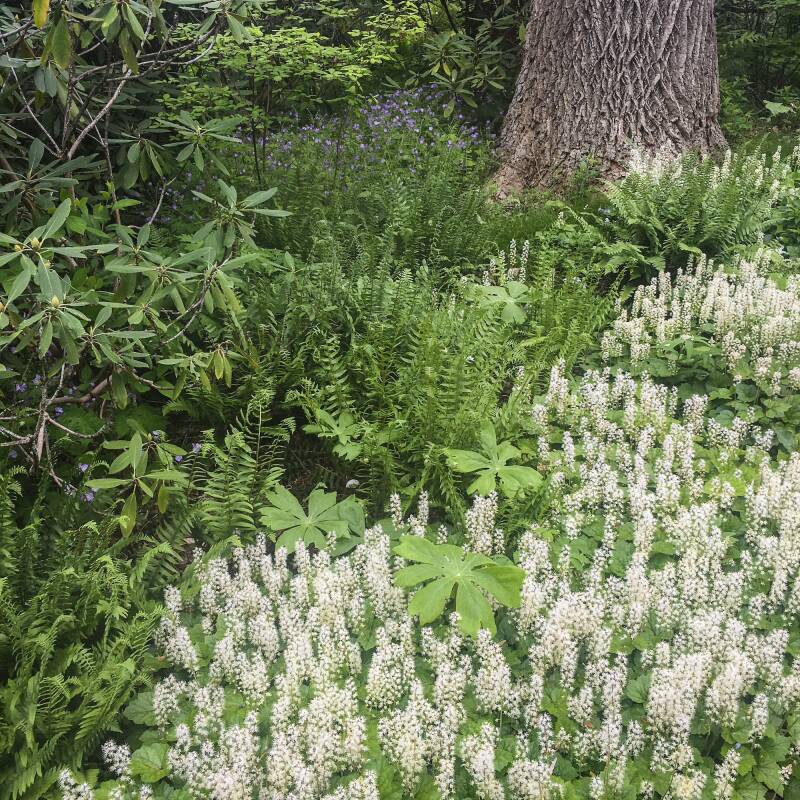Whatever your thoughts on monarchy, King Charles III has been a hugely vocal and consistent campaigner for nature. Long before we had even heard the term “climate crisis” or “sustainability,” he was pleading for a more eco-friendly approach. When he was just 22 years old, the fresh-faced Prince of Wales addressed the Countryside in a 1970 conference to speak on what we’d now call “green issues.” He was often dismissed as a crazy eccentric who talked to his plants. But as we’ve all collectively caught up with these ideas, Great Britain’s newly minted monarch has looked prophetic.
As the heir to the throne, he could campaign tirelessly about these issues. As monarch he is constitutionally obliged to be impartial but he’s likely to still wield some soft power, setting an example as he has done for decades on royal estates and through national programs. Protecting nature is, he believes, a moral duty, above any political wranglings.
Photography by Clare Coulson, unless otherwise noted.

Highgrove, the King’s beloved country house in the Cotswolds, has acted as a test bed for sustainable gardening. When he bought the house in 1980, he set about implementing all his ideas on nature and horticulture. He tasked Dame Miriam Rothschild with creating wildflower meadows, including the famous swathe of vivid blue camassias that frame the grassland up to the house.
And that passion has now extended to the royal parks, with areas given over to meadow planting and grasses allowed to grow longer in a boost to biodiversity. He understands the potent social and therapeutic benefits of everyone having access to outdoor space. There have even been whispers of a green belt across central London joining up Green Park, the 39 acres of walled garden around Buckingham Palace, along with Hyde Park to create a nature corridor. The Palace’s garden alone is one of the most biodiverse in London and also houses the national collection of mulberry trees.


Trees are another passion that has inspired national planting programs. For the Queen’s diamond jubilee in 2012, six million trees were planted to mark her 60 years on the throne. For this year’s platinum jubilee a similar scheme was launched—the Queen’s Green Canopy, to plant one million trees across Great Britain in any green space from private gardens to public parks and community spaces.


The King has also helped promote more sustainable approach to floristry. The marriage of Prince William and Kate Middleton was notable for its sustainable approach under the direction of florist Shane Connolly, who introduced living maple and hornbeam trees to Westminster Abbey that were then planted at another royal property in Wales, Llwynywermod. This approach has continued— most recently at Queen Elizabeth II’s funeral, where the beautiful flowers were cut from royal estates and made into an entirely compostable wreath. All the flowers laid by members of the public around Windsor and other royal estates have also been collected and composted.

In 1985 as Prince of Wales, Charles converted his own farmland at Duchy Home Farm to organic, developing his own Duchy Organic brand that was consequently sold to the supermarket chain, Waitrose. Via workshops and other initiatives the farm promotes organic growing and sustainable farming. More recently he has applied his organic approach to the gardens, estate and farmland of the Sandringham estate in Norfolk. Since 1990 suppliers to the Prince of Wales’ household have also had to demonstrate a responsible approach to the environment and social issues.

But it’s not just about his personal enclaves. The King actively promotes green ideas and natural skills. At Dumfries House in Scotland, which is now part of his charity, The Prince’s Trust, he is building a rural skills training center that will open next summer and teach recent high school graduates and others about potential careers and heritage skills in the countryside, including hedge laying, dry stone walling, woodworking and fencing, preserving this specialist knowledge for future generations.
For more on the British monarchy, see:
- Required Reading: Prince Charles and his Highgrove Garden
- Royal Wedding Bridal Bouquet: It’s Myrtle’s Moment
- 10 Garden Ideas to Steal from Meghan Markle and Prince Harry at Home












Have a Question or Comment About This Post?
Join the conversation (0)